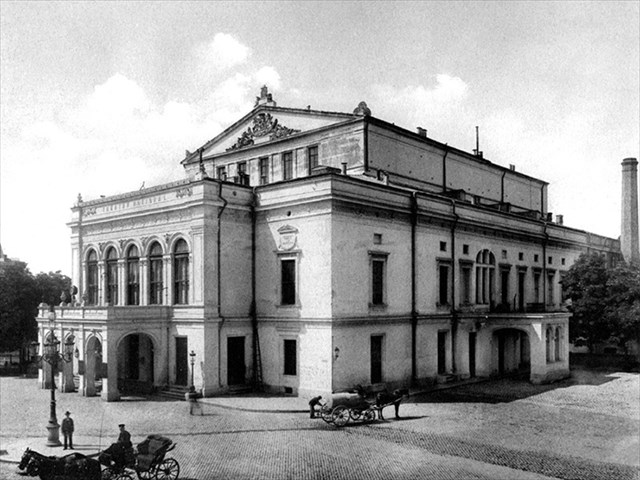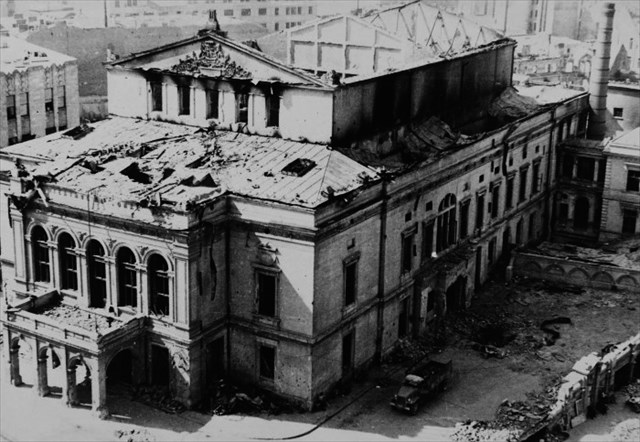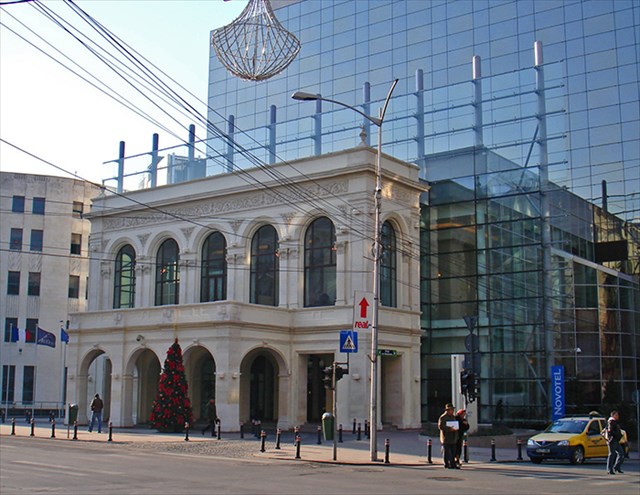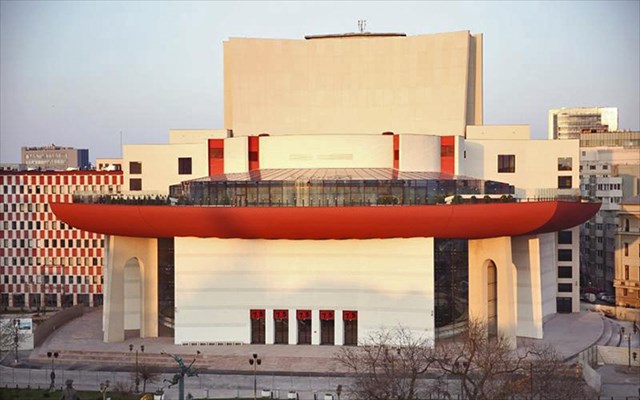Founding
It was founded as the Teatrul cel Mare din Bucureşti ("Grand Theatre of Bucharest") in 1852, its first director being Costache Caragiale. It became a national institution in 1864 by a decree of Prime Minister Mihail Kogălniceanu, and was officially named as the National Theatre in 1875; it is now administered by the Romanian Ministry of Culture.
In April 1836, the Societatea Filarmonica — a cultural society founded by Ion Heliade Rădulescu and Ion Câmpineanu — bought the Câmpinencii Inn to build a National Theatre on the site, and began to collect money and materials for this purpose. In 1840, Obşteasca Adunare (the legislative branch established under the terms of the Imperial Russian-approved Organic Statute) proposed to Alexandru II Ghica, the Prince of Wallachia, a project to build a National Theatre with state support. The request was approved on June 4, 1840. Prince Gheorghe Bibescu adopted the idea of founding the theatre and chose a new location, on the spot of the former Filaret Inn. There were several reasons to favor this locations: it was centrally located, right in the middle of Podul Mogoşoaiei (today's Calea Victoriei); the earthquake of 1838 had damaged the inn beyond repair, and it needed to be torn down.
Old building
The August 13, 1843, report of the commission charged with building the theatre determined that construction would cost 20,300 Austrian guilder (standard gold coins, a sum worth about US$45,000 at the time[citation needed]), of which only 13,000 gold coins were available. In 1846, a new commission engaged the Vienese architect A. Hefft, who came up with an acceptable plan.
Construction got under way in 1848, only to be interrupted in June by the Wallachian revolution. In August 1849, after Prince Barbu Dimitrie Ştirbei took power, he ordered that construction be completed.

The old building of the National Theatre in 1901–1904, photo by Alexandru Antoniu
The theatre was inaugurated on December 31, 1852, with the play Zoe sau Amantul împrumutat, described in the newspapers of the time as a "vaudeville with songs". The building was built in the baroque style, with 338 stalls on the main floor, three levels of loges, a luxurious foyer with staircases of Carrara marble and a large gallery in which students could attend free of charge. For its first two years, the theatre was lit with tallow lamps, but from 1854 it used rape oil lamps; still later this was replaced by gaslights and eventually electric lights. In 1875, at the time its name was changed to Teatrul Naţional, its director was the writer Alexandru Odobescu.
The historic theatre building on Calea Victoriei — now featured on the 100-leu banknote — was destroyed during the Luftwaffe bombardment of Bucharest on August 24, 1944 (see Bombing of Bucharest in World War II).


The front of the Bucharest Novotel, on Calea Victoriei in 2010, replicates the exterior of the old Romanian National Theatre approximately in its original location
The modern theatre
The current National Theatre is located about half a kilometre away from the old site, just south of the Hotel Intercontinental at Piaţa Universităţii (University Square), and has been in use since 1973.
The new building of the National Theatre was inaugurated on December 20th 1973 together with its three halls: The Great Hall, The Small Hall and The Black Box. The initial project (1964-1973) was signed by the architects Horia Maicu, Romeo Belea and Nicolae Cucu and the resistance structure was projected by the engineer Alexandru Cişmigiu. The building’s architecture subscribed to the 60’s modernism movement, but the façade was left unfinished.

The “hat” shape that became the building’s symbol turned out to be fatidic. The fact that the structure didn’t resemble a “house” at all but looked more like a hat, determined Ceauşescu to ask, in 1978, after a fire at The Great Hall, to reshape the theatre both on the exterior as well as in the interior.

The actual building was reconstructed from 2010 to 2014.

Sources: wikipedia.com, tnb.ro
Images © respective owners